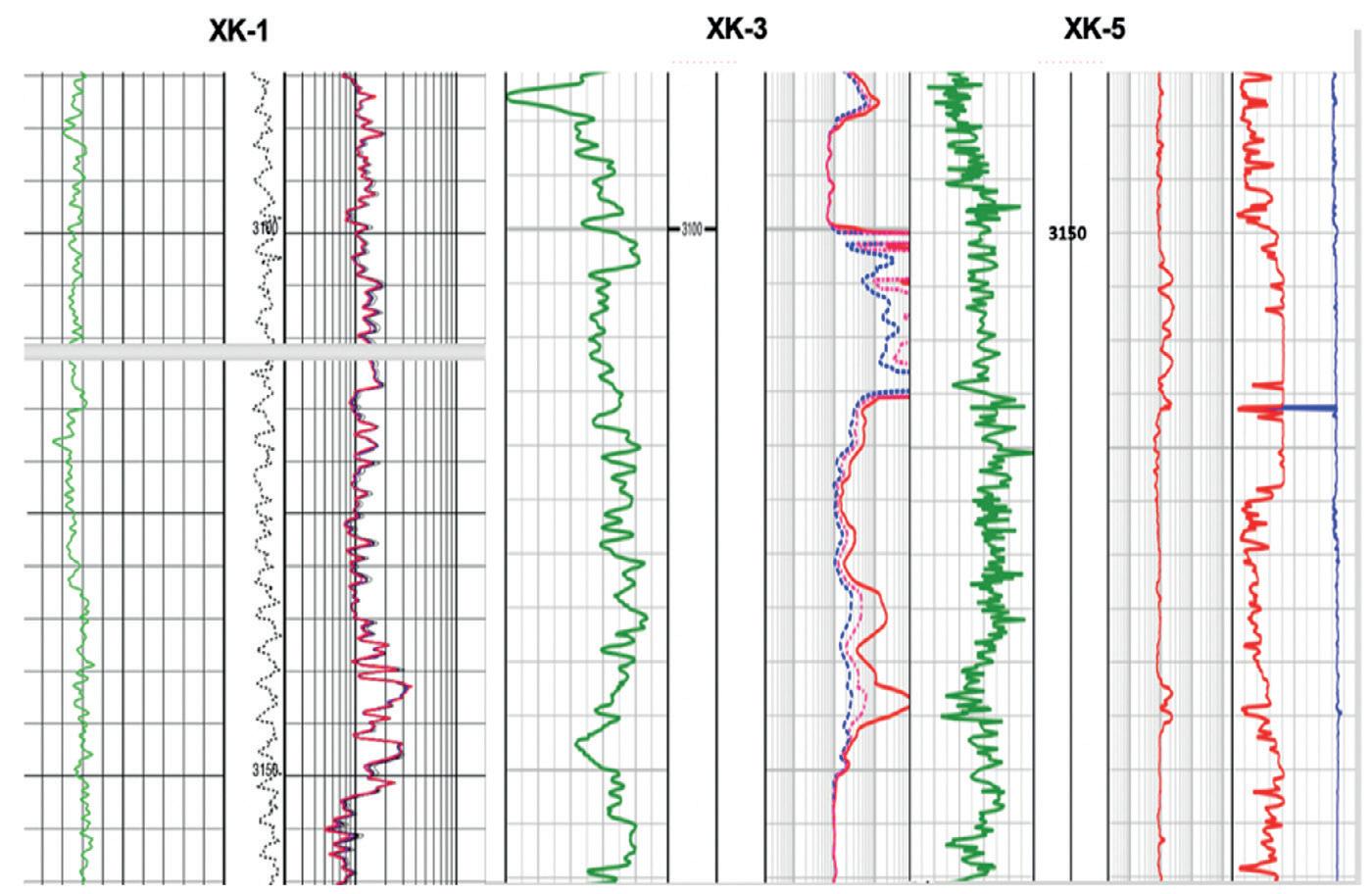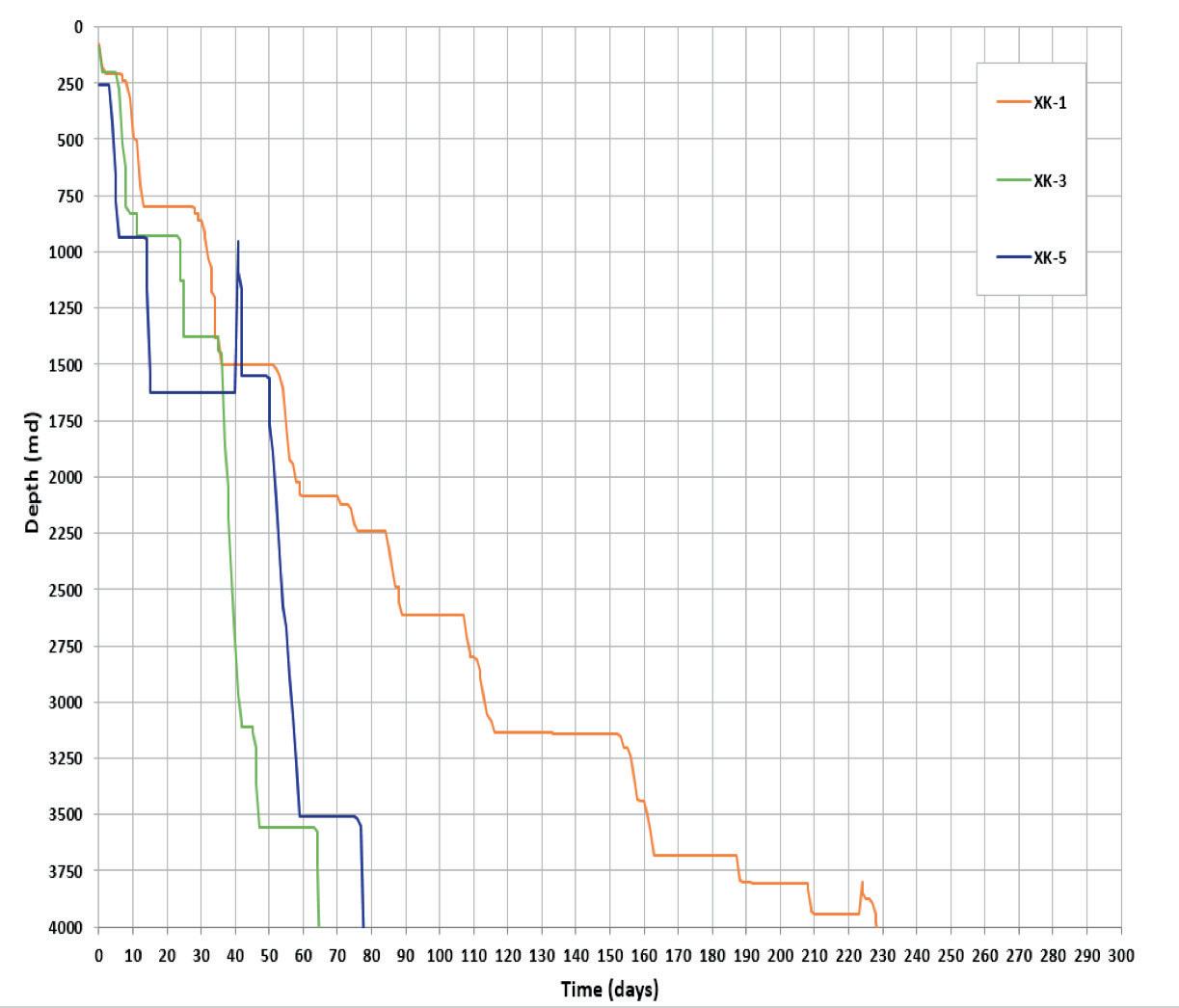
7 minute read
Overcoming difficult geomechanics in Mexico
Viridiana Parra, Grupo R, Mexico, and Reinaldo Maldonado and Justin McLellan, Impact Fluid Solutions,
show how drilling fluids were successfully deployed at a wellbore offshore Mexico that was experiencing instability and lost circulation issues.
Wellbore instability issues are all too common for operators drilling high-profile deepwater wells in mechanically weak formations with depleted zones and high differential pressures. These challenging conditions can not only disrupt the drilling process – increasing costs and non-productive time (NPT) – but also limit ultimate recoveries. As a result, operators are increasingly recognising the need to take a preventative approach when drilling in environments, such as high-pressure, high-temperature (HPHT) intervals, where wellbore stability may be at risk.
In a new field offshore Mexico, an operator experienced significant lost circulation while drilling an exploratory well. This prompted the operator to revisit its geomechanics strategy and drilling fluid formulation. After assessing potential solutions, the operator deployed a fluid additive that shields the wellbore during drilling to address instability issues proactively.
New field development
As part of Mexico’s 2013 energy reforms, the country’s hydrocarbon commission (CNH) has been implementing a new field development strategy designed to boost Mexico’s oil production. The primary goal was to increase reserves in shallow water basins southeast of Campeche Bay. The region is approximately 30 km (19 miles)

Figure 1. XK field well review with the 14-1/2 in. openhole area in amber.
Figure 2. Comparison of drilling fluid densities in XK field.
Figure 3. Log comparison between three wells drilled in the same area.


northwest of the Dos Bocas marine terminal, and has an estimated sea depth of 32 m (105 ft).
The new field, the Xikín field, will be referred to as the XK field in this article. Wells there were programmed to drill from the recent Pleistocene to Jurassic formations, with measured depths (MD) of more than 7000 m (22 965 ft), temperatures greater than 170˚C (338˚F) and pressures exceeding 17 000 psi.
XK field
The main characteristic of this field was the transmission of pressure into the sands, as determined by modular dynamic testers (MDTs) in surrounding fields and in Well XK-1, where optical analysers were used to measure pressures and identify fluids. The recorded pressure gradient in Well XK-1 was 0.46 psi, which is comparable to a density of 1.07 g/cm3 (water). Pressure values as high as 4158.80 psi were reached at 1700 m (5580 ft) total vertical depth (TVD).
Using a one-dimensional geomechanical model of the field, also known as a mechanical earth model (1D MEM), an investigation of the drilling events in the offset wells identified the key stages of severe lost circulation, water influx and stuck drill pipe due to differential pressure (Figure 1). It was necessary to perform a sidetrack and run a contingency casing in the offset wells, resulting in 10 to 15 days of NPT per well for well control, in addition to increased equipment costs and contingency materials.
The range of fluid densities in adjacent wells was also investigated. This work established the optimal drilling fluid density of 1.74 g/cm3 (14.52 lb/gal.), which would control water influx by pressure and reduce fluid loss into the formation (Figure 2).
Wellbore instability
The design stage included an analysis of the zones with the highest risk of wellbore instability, a condition that occurs when an openhole interval fails to retain its gauge size and form and structural integrity over time – due to either mechanical or chemical issues. In the XK field, wellbore instability was found to be causing lost circulation in the intermediate section, characterised by interbedded layers of carbonates, shales and sand.
Even minimal lost circulation issues should be monitored and evaluated to ensure they do not signal the beginning of more serious problems that could result in significant fluid losses, operational difficulties and NPT. To mitigate losses
efficiently and economically, it is important to assess various factors, including: Ì Magnitude of fluid loss, ranging from seepage to significant fluid loss or even entire loss of drilling fluid. Ì Rate of fluid loss, including any increase or decrease which – in the worst-case scenario – may signal a kick or loss of well control.
Wellbore stabilisation mechanism
To address wellbore instability and lost circulation issues, the operator evaluated available options, including managed pressure drilling (MPD), running a sacrificial casing or deploying an additive in the drilling fluid based on performance gains seen in similar sections in nearby wells. During the technology planning stage for Well XK-5, the operator was confident it had discovered the solution for drilling the intermediate section: a novel mechanism that was tested during the XK field’s exploration phase.
The wellbore stabilisation technology (WST) was associated with the particle size distribution (PSD) used in the drilling fluid formulation to seal the formation. However, it was demonstrated early in the development phase (Wells XK-3 and XK-4) that PSD was not the only relevant consideration, as the nature of the particle material mattered as well. Given the constant transition zones that must be traversed during drilling operations, it was established that the particles must be adaptable to the formation’s pore openings.
Based on performance tests and data obtained at the development stage, the operator decided to use the WST and deployed it successfully during the exploration stage. The additive contained a blend of flexible materials capable of sealing a wide range of fractures from 1 to 3000 μm, and used in low concentrations to reduce the effect on the equivalent circulating density (ECD).
The WST operates in the ‘background’ as a low-dose additive in the drilling fluid system. It seals each new fresh rock being drilled in real-time, preventing the transmission of fluid and pressure that can later weaken the formation and cascade into serious wellbore instability issues. Unlike particles used in stress caging, the WST does not penetrate the formation. Additionally, the particle size is unaffected by the shearing effects of the drilling fluid, minimising the amount of product required to maintain the drilling fluid system.
Result
According to the operator, stuck pipe in an offset well led to the loss of more than 2200 m3 (13 837 bbl) of oil-based drilling fluid and significant NPT. Well XK-1 exhibited apparent fluid invasion along the entire section, as shown by the resistivity log, and the same behaviour was found in Well XK-3.
For its part, Well XK-5 did not reveal any evidence of fluid invasion in the same area. That corresponds to the physical events that occurred at the surface, as no drilling fluid was reported to have been lost during the drilling of that section (Figure 3). Notably, Wells XK-3 and XK-5 were just 30 m apart from each other (Figure 4, Table 1). Figure 4. Drilling progress comparison of XK-5 with WST versus offset wells (without).
Table 1. ROP comparison Well Total length drilled in 14-1/2 in. openhole (m) Rig days ROP (m/d)
XK-1 2321 172 13.5 XK-3 2181 13 167.7 XK-5 1959 10 196 With the WST stabilising the wellbore and enabling drilling within a narrow fracture gradient window, Well XK-5 experienced no wellbore instability issues in the intermediate section. It was the first well in the area to experience zero drilling fluid losses, compared to the typical 5 to 10 m3/hr lost in the intermediate section during the exploration stage. The operator and fluid additive provider worked together to use best practices and deploy the WST to overcome geomechanical weakness and HPHT conditions for problem-free drilling in that complex interval.
Conclusion
According to the drilling fluid data, no wellbore instability was observed, in contrast to extremely difficult scenarios for offset wells targeting the same reservoir. Field-proven technology, such as the wellbore stabilising fluid additive, can be incorporated into drilling fluid systems to improve wellbore stability when confronted with varying geological formations and challenges. The industry faces increasing drilling hurdles when new hydrocarbon sources are identified in more geologically complicated and remote reservoirs. If unstable formation behaviours are not considered at the planning stage for future drilling, wellbore integrity may be jeopardised. Furthermore, the method added wellbore strength to weak rocks, allowing the drilling operation to proceed as planned. As a result, the operator significantly reduced the NPT associated with lost circulation, stuck pipe and well instability, allowing for the delivery of a high-quality producing well.











